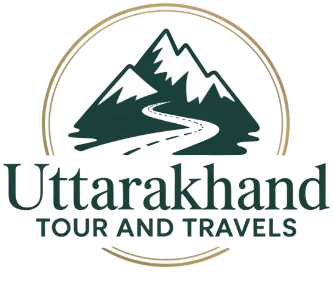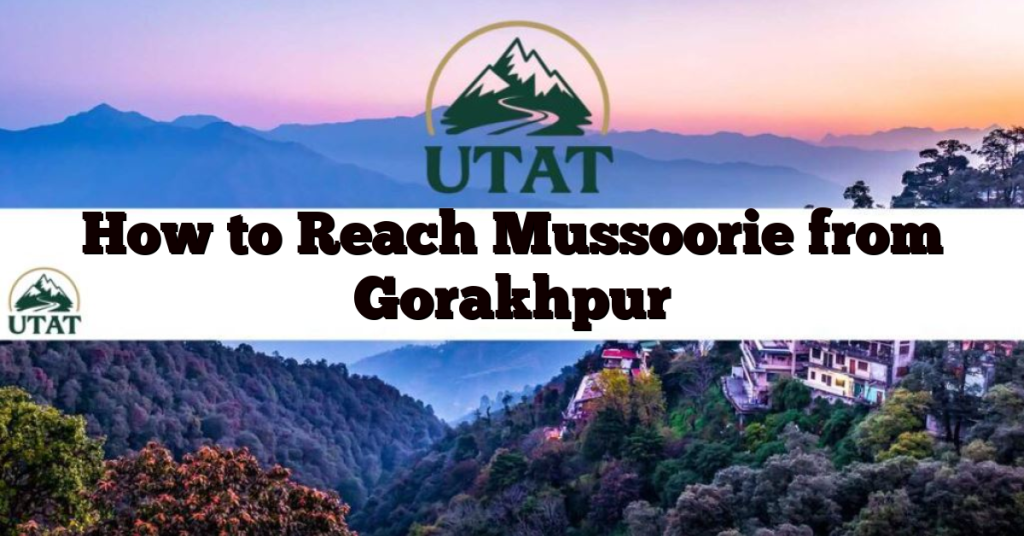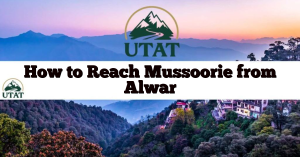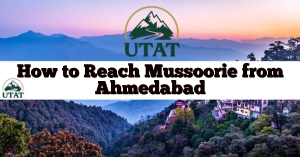Mussoorie, crowned as the “Queen of Hills,” is a bustling Himalayan retreat adored for its colonial charm, cool climes, and mesmerizing Himalayan vistas. Traveling from Gorakhpur—a significant city in eastern Uttar Pradesh—offers a remarkable journey traversing the heart of North India before ascending to the Himalayan heights of Mussoorie. This comprehensive article details the distance, top travel modes, routes, estimated costs, and practical tips for a seamless trip from Gorakhpur to Mussoorie.
Distance from Gorakhpur to Mussoorie
- Road Distance: Most routes place the road distance between 800 and 950 km depending on the path taken; a widely referenced value is about 950+ km when routed via Delhi.
- Travel Time: Varies from 12 to 18 hours based on chosen mode, transfers, stops, and traffic.
- Aerial (Straight-line) Distance: About 700–800 km (no direct flights).
How to Reach Mussoorie from Gorakhpur
You can reach Mussoorie via several combinations of train, air, bus, and taxi. Each option offers a blend of comfort, cost, and total duration.
1. By Air + Road (Fastest Option)
Step 1: Flight from Gorakhpur to Dehradun (via Delhi)
- No direct flights from Gorakhpur (GOP) to Dehradun (DED); you typically connect via Delhi.
- Gorakhpur → Delhi: Several daily flights (approx. 1.5 hours).
- Delhi → Dehradun: Multiple daily flights (approx. 1 hour); allow for layover time.
- Total air travel (including layover): 4–7 hours.
Step 2: Dehradun to Mussoorie by Road
- Dehradun’s Jolly Grant Airport is about 34 km from Mussoorie.
- Taxis (₹1,200–₹2,500) and state buses or shared cabs are available; travel takes 1.5–2 hours.
Estimated Total Travel Time: 7–10 hours (including airport time and road transfer).
Approximate Airfare: ₹8,000–₹20,000 depending on route and season.
Why Choose This Option?
- Fastest: Save time and arrive refreshed.
- Good for business travelers and families seeking comfort.
- Enjoy a scenic drive for the final ascent.
2. By Train + Road (Budget-Friendly & Scenic)
There are several direct and connecting train options from Gorakhpur to the hills, with the final leg by taxi or bus.
Key Trains from Gorakhpur
- Direct to Dehradun: Multiple trains including Rapti Ganga Express (16h 49m) and MFP DDN Express.
- To Haridwar/Roorkee/Saharanpur: Several daily/biweekly trains take about 13–17 hours; Haridwar is 85 km and Saharanpur is about 110 km from Mussoorie by road.
Journey Example
- Gorakhpur → Dehradun:
- Board Rapti Ganga Express (departs late evening, arrives afternoon next day; approx. 17 hours).
- Fare: ₹250–₹700 depending on class.
- Last Leg: Dehradun/Haridwar → Mussoorie
- From Dehradun: 34 km uphill by taxi (₹1,200–₹2,500) or bus (₹80–₹200).
- From Haridwar: 85 km, 2.5–3 hours by taxi/bus.
- From Saharanpur: 110 km, 3–4 hours.
Estimated Combined Travel Time: 16–20 hours (including connections and transfer).
Why Choose?
- Cost-effective for solo, student, or family travelers.
- Overnight journey; arrive fresh for hill travel.
- Ample choices for stops and flexible schedules.
3. By Bus + Road
A practical, budget option, especially if you enjoy overland travel.
Gorakhpur to Dehradun Bus
- Regular buses (including sleeper/AC) operate via Delhi and Uttaranchal.
- Typical Journey: 15–18 hours to Dehradun; add 1.5–2 hours to Mussoorie by taxi or local bus.
- Total Cost: ₹1,400–₹2,500 depending on bus type.
Dehradun to Mussoorie
- State buses and shared cabs run frequently.
- Duration: 1.5–2 hours.
Tips:
- Book buses in advance for peak season.
- Buses can get crowded; ensure change for food and rest stops.
4. By Car/Taxi (For Direct, Flexible Travel)
If you prefer overland adventure and are traveling with a group or family:
- Distance: 800–950 km depending on route (Meerut, Moradabad, Delhi bypass, or Haridwar).
- Driving Time: Minimum 12–14 hours (excluding breaks).
- Estimated Taxi Fare: ₹12,000–₹16,000; self-drive may be more economical for round-trips.
Additional Travel Information
Best Time to Visit Mussoorie
- March–June: Pleasant, ideal for sightseeing and walks.
- July–September: Monsoon—lush beauty but occasional landslides.
- October–February: Crisp winter, chance of snow; carry woolens.
Packing Tips
- Summer: Light woolens, hats, sunscreen.
- Monsoon: Raincoat, waterproof footwear.
- Winter: Heavy jackets, gloves, layers.
Must-See Sights in Mussoorie
- Mall Road, Kempty Falls, Gun Hill, Lal Tibba, Camel’s Back Road, Landour.
Local Travel Tips
- Book trains and flights well in advance; tickets fill fast for holidays.
- Reach Dehradun/Haridwar during daylight for an easier hill climb to Mussoorie.
- Carry snacks and cash; some stretches lack food stops or ATMs.
Frequently Asked Questions
Q: Are there direct trains from Gorakhpur to Mussoorie?
A: No. Most trains terminate at Dehradun, Haridwar or Saharanpur. Continue by taxi or bus uphill.
Q: Can I get a direct bus or taxi?
A: Some operators offer direct and semi-direct buses; taxis are available for direct/one-way travel but are costlier for solo travelers.
Q: What is the cheapest route?
A: Train to Dehradun/Saharanpur, then state bus or shared taxi to Mussoorie.
Q: How long does the fastest route take?
A: Flights via Delhi (if timed well) plus the final road leg can cover the distance in 7–10 hours.
Conclusion
Getting to Mussoorie from Gorakhpur is an adventure spanning plains, rivers, and the rise into Himalayan hills. The fastest option is flying via Delhi to Dehradun and then a quick taxi climb; the most economical is an overnight train or bus to Dehradun, then a scenic onward ride. Private taxis or self-drive make the trip flexible for groups or road-trip enthusiasts.
Whichever route you choose, advance booking and smart packing ensure your journey is smooth and your hill station retreat rewarding. Mussoorie’s fresh air, vibrant Mall Road, and amazing views are just a well-planned journey away.









